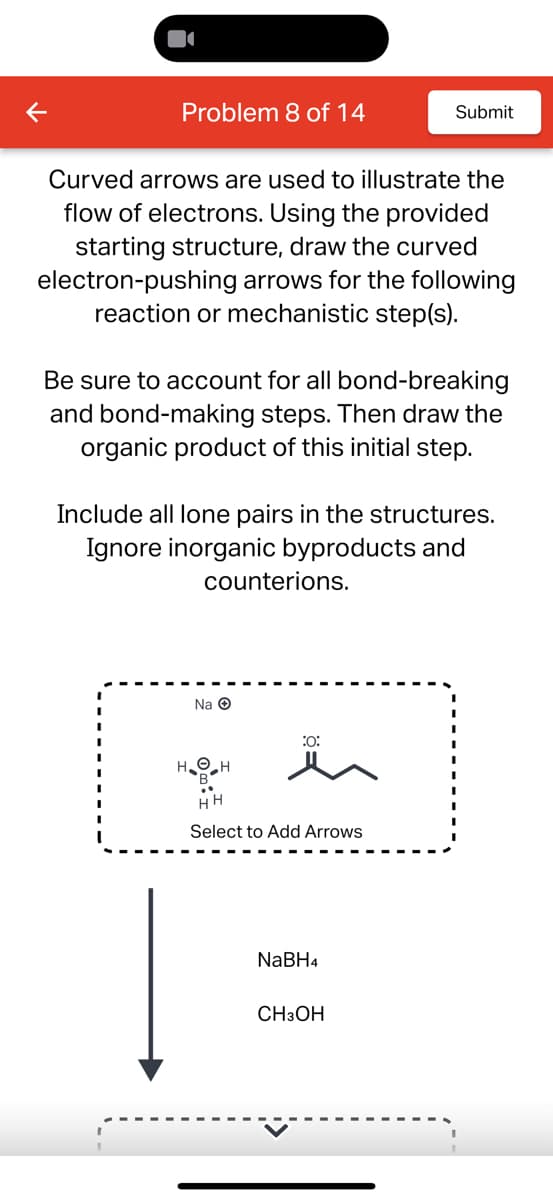Problem 8 of 14 Submit Curved arrows are used to illustrate the flow of electrons. Using the provided starting structure, draw the curved electron-pushing arrows for the following reaction or mechanistic step(s). Be sure to account for all bond-breaking and bond-making steps. Then draw the organic product of this initial step. Include all lone pairs in the structures. Ignore inorganic byproducts and counterions. Na → :0: Select to Add Arrows NaBH4 CH3OH
Problem 8 of 14 Submit Curved arrows are used to illustrate the flow of electrons. Using the provided starting structure, draw the curved electron-pushing arrows for the following reaction or mechanistic step(s). Be sure to account for all bond-breaking and bond-making steps. Then draw the organic product of this initial step. Include all lone pairs in the structures. Ignore inorganic byproducts and counterions. Na → :0: Select to Add Arrows NaBH4 CH3OH
Organic Chemistry: A Guided Inquiry
2nd Edition
ISBN:9780618974122
Author:Andrei Straumanis
Publisher:Andrei Straumanis
Chapter16: Synthesis Workshop 1
Section: Chapter Questions
Problem 28E
Related questions
Question

Transcribed Image Text:Problem 8 of 14
Submit
Curved arrows are used to illustrate the
flow of electrons. Using the provided
starting structure, draw the curved
electron-pushing arrows for the following
reaction or mechanistic step(s).
Be sure to account for all bond-breaking
and bond-making steps. Then draw the
organic product of this initial step.
Include all lone pairs in the structures.
Ignore inorganic byproducts and
counterions.
Na →
:0:
Select to Add Arrows
NaBH4
CH3OH
Expert Solution
This question has been solved!
Explore an expertly crafted, step-by-step solution for a thorough understanding of key concepts.
Step by step
Solved in 1 steps with 1 images

Recommended textbooks for you

Organic Chemistry: A Guided Inquiry
Chemistry
ISBN:
9780618974122
Author:
Andrei Straumanis
Publisher:
Cengage Learning

Organic Chemistry: A Guided Inquiry
Chemistry
ISBN:
9780618974122
Author:
Andrei Straumanis
Publisher:
Cengage Learning